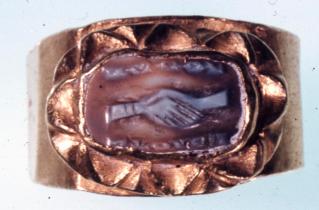Roman Times
A falling out amongst the
iron Age Kings of England provided Emperor Claudius with the excuse
to invade England in AD 43.
After two battles Claudius
was able to lead his army into the Trinovantes capital of
Camuludunum (Colchester) which at the time was one the most
important towns in the Country.

Despite the Rebellion of the
Iceni and the Trinovantes led by Queen Boudicca the Roman grip was
established on eastern England that was maintained for nearly 400
years.
While the rest of England was being conquered Colchester made a good base and became the centre of Roman operations.
Protection for Colchester
from the sea was required as local settlements made rich pickings
for Saxon and Frankish Raiders who arrived by longboat to plunder
coastal areas.
To combat this threat the
Romans established 9 sea forts on the east coast including a fort at
Bradwell to guard the approaches to the Colne and Blackwater.
This fort was called
Othona
and continued to operate for 200 years.
The fort was square with 12
feet thick walls with a moat constructed around the fort and manned
by a force of auxiliaries called the Fortenses who would use
camouflaged scout boats to watch the shore and keep in touch with
the force headquarters at Richborough and Bolougne.

Sadly little remains of the Roman fort although the area is still
identifiable.
Much of the Fort was used in
Saxon times to construct St Peters Chapel although traces of the
earthworks still remain. The sister fort at Porchester fortunately
remains in good repair to tell us what Othona would have looked
like.

The Dengie area was an
important source of salt from the red hill sites and was a source of
fish and farming produce.
A road inland was established
from Othona into the centre of the Dengie 100 but no linkage to the
main road network can be traced. An example of this roman road
system is the modern East End Road, Bradwell on sea which is
straight for a long section leading from the site of the fort at
Othona.

To ensure transport to
Colchester and other settlements in Essex and Kent a port was
required. Finds of pottery etc at Burnham on Crouch is believed to
indicate one of the earliest uses of Burnham as a port.
Villas and fortified farms
are believed to have been established on rich land between Burnham
on Crouch and Southminster.
A first century roman
farmstead was excavated to the northwest of the town on a site now
covered by the Springfield Industrial Estate Photographs of the site
are to be found at Burnham Museum. Roman bricks and tiles used in
the fabric of the Church are believed to have come from this site.



